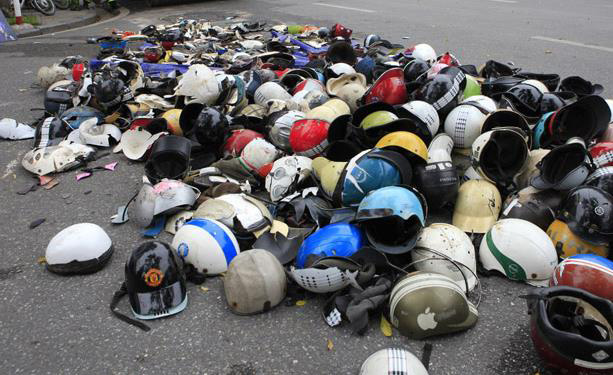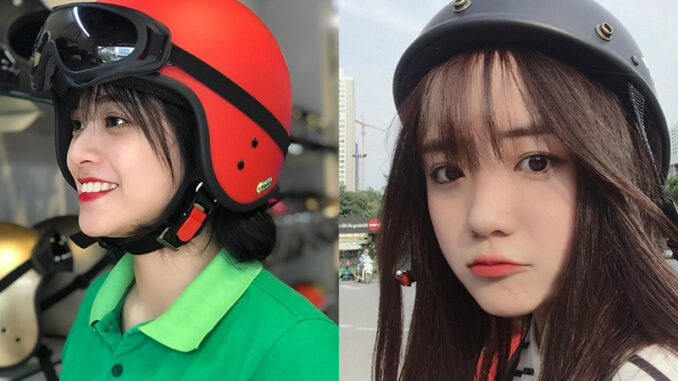Helmets are essential for ensuring safety in activities like motorcycling, cycling, skiing, and industrial work. Behind every helmet lies a rigorous process of testing and design aimed at providing maximum protection. Crash tests play a crucial role in shaping helmet manufacturing standards, ensuring that these protective devices meet stringent safety requirements. This article delves into the importance of crash tests, their methodologies, and how they influence helmet standards globally.
Why Crash Tests Are Essential for Helmet Safety
Crash tests simulate real-world scenarios to evaluate a helmet’s ability to protect the wearer from impact. These tests provide manufacturers with crucial data about:
- Impact Resistance: The helmet’s ability to absorb and dissipate energy from a collision.
- Structural Integrity: Ensuring the helmet remains intact during impact.
- Protection Levels: Assessing how well the helmet safeguards the head and brain from injuries.
By identifying weaknesses, crash tests help manufacturers improve designs, making helmets safer and more reliable.

How Crash Tests Are Conducted
Crash testing involves recreating various accident scenarios to evaluate helmet performance. Here are the primary aspects of crash testing:
1. Impact Testing
Impact tests measure a helmet’s ability to absorb shock during collisions. The helmet is dropped onto different surfaces (e.g., flat, curved, or angled anvils) from specified heights to mimic real-world impacts. Sensors inside the test headform record data such as:
- G-Forces: The forces transmitted to the head.
- Energy Absorption: The ability of the helmet’s materials to absorb and dissipate energy.
2. Penetration Testing
In penetration tests, a sharp object is dropped onto the helmet to assess whether it can resist punctures. This test ensures the helmet can protect against flying debris or sharp objects encountered during accidents.
3. Retention System Testing
The helmet’s straps and buckles are tested to ensure they remain secure during impact. These tests involve applying forces to the retention system to evaluate:
- Durability of the straps.
- Resistance to slipping or breakage.
4. Environmental Testing
Helmets are exposed to extreme temperatures, humidity, and UV radiation to simulate various weather conditions. This ensures the helmet retains its protective qualities regardless of the environment.
5. Rotational Force Testing
Recent advancements in testing also focus on rotational impacts. These tests measure how well a helmet mitigates rotational forces that can cause traumatic brain injuries. Technologies like MIPS (Multi-Directional Impact Protection System) are often evaluated during these tests.
Key Organizations Setting Helmet Standards
Crash tests influence helmet manufacturing standards set by various organizations worldwide. These standards dictate the minimum safety requirements for helmets in specific regions and activities.
1. DOT (Department of Transportation)
- Region: United States
- Focus: Motorcycle helmets
- Key Tests: Impact, penetration, retention system, and peripheral vision
- Example Standard: FMVSS 218
2. ECE (Economic Commission for Europe)
- Region: Europe and other countries
- Focus: Motorcycle and motorsport helmets
- Key Tests: Impact absorption, retention system, and abrasion resistance
- Example Standard: ECE 22.06
3. Snell Memorial Foundation
- Region: International
- Focus: High-performance helmets (motorcycle, auto racing, etc.)
- Key Tests: Multi-impact tests, rotational forces, and penetration resistance
- Example Standard: Snell M2020D/M2020R
4. ANSI (American National Standards Institute) and ASTM International
- Focus: Sports helmets (cycling, skiing, etc.)
- Key Tests: Impact, retention, and field of vision
5. IS (Indian Standards)
- Region: India
- Focus: Motorcycle helmets
- Key Tests: Impact absorption, retention, and environmental testing
6. SHARP (Safety Helmet Assessment and Rating Programme)
- Region: United Kingdom
- Focus: Motorcycle helmets
- Key Tests: Real-world impact simulations
- Unique Feature: Provides a star rating system based on crash test results.
How Crash Test Results Shape Helmet Manufacturing
1. Material Innovation
Crash tests reveal the performance of different materials under stress, driving innovation in:
- Shell Materials: Lightweight composites like carbon fiber and fiberglass improve impact resistance.
- Liners: Multi-density EPS (expanded polystyrene) foam offers superior energy absorption.
- Padding: Enhanced comfort without compromising safety.
2. Design Improvements
Test results guide manufacturers in refining helmet designs, such as:
- Aerodynamics: Reducing wind resistance and noise.
- Ventilation: Balancing airflow and structural integrity.
- Visors: Anti-fog and anti-scratch coatings for better visibility.
3. Incorporation of Advanced Technologies
Technological advancements influenced by crash tests include:
- MIPS: Reduces rotational forces during impacts.
- Smart Helmets: Features like impact sensors and emergency communication systems.
- Photochromic Visors: Adapt to changing light conditions.
4. Standard Compliance
Manufacturers use crash test data to ensure helmets meet or exceed the standards set by regulatory bodies. Passing these tests is essential for market approval.
The Role of Consumer Awareness
Consumers play a vital role in driving helmet safety by prioritizing certified helmets. When purchasing a helmet, look for:
- Certification Labels (e.g., DOT, ECE, Snell).
- Independent Ratings (e.g., SHARP).
- Verified Safety Features (e.g., anti-fog visors, MIPS).

The Future of Crash Testing and Helmet Standards
As technology advances, crash testing and helmet manufacturing will continue to evolve. Some emerging trends include:
1. Virtual Crash Testing
Computer simulations are increasingly used to complement physical tests, enabling manufacturers to:
- Test multiple scenarios efficiently.
- Reduce development costs and time.
2. Focus on Rotational Impacts
Research into brain injuries has highlighted the importance of mitigating rotational forces. Future standards may place greater emphasis on technologies like MIPS.
3. Sustainability
Crash tests are beginning to evaluate eco-friendly materials, promoting helmets that are both safe and environmentally conscious.
4. Customization
Advancements in 3D printing and scanning may lead to helmets tailored to individual head shapes, enhancing both comfort and safety.
Conclusion
Crash tests are the backbone of helmet safety, providing critical data that influences manufacturing standards and design. By simulating real-world scenarios, these tests ensure helmets offer maximum protection, comfort, and durability. As technology evolves, crash testing methodologies and helmet standards will continue to improve, paving the way for even safer and more innovative helmets. Whether you’re a motorcyclist, cyclist, or skier, understanding the importance of crash-tested helmets can help you make informed decisions that prioritize your safety.


